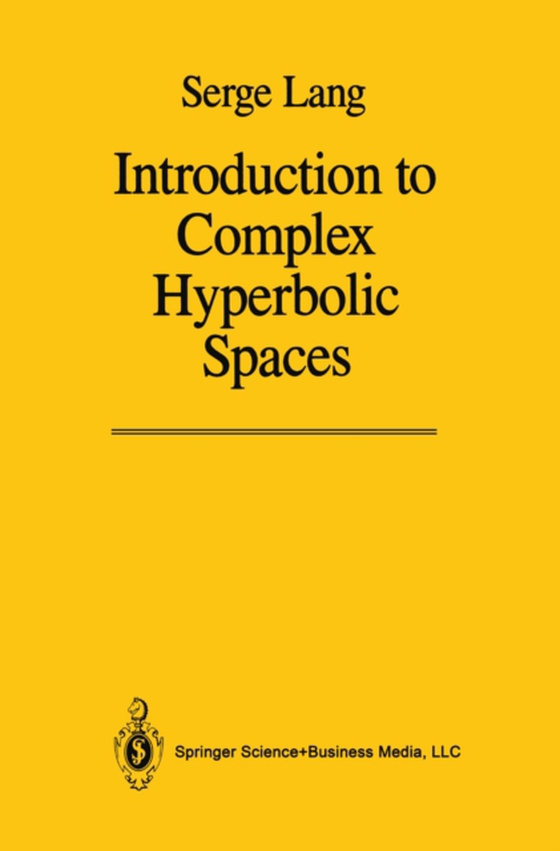
Introduction to Complex Hyperbolic Spaces e-bog
875,33 DKK
(inkl. moms 1094,16 DKK)
Since the appearance of Kobayashi's book, there have been several re- sults at the basic level of hyperbolic spaces, for instance Brody's theorem, and results of Green, Kiernan, Kobayashi, Noguchi, etc. which make it worthwhile to have a systematic exposition. Although of necessity I re- produce some theorems from Kobayashi, I take a different direction, with different applications in mind, so ...
E-bog
875,33 DKK
Forlag
Springer
Udgivet
9 marts 2013
Genrer
PBK
Sprog
English
Format
pdf
Beskyttelse
LCP
ISBN
9781475719451
Since the appearance of Kobayashi's book, there have been several re- sults at the basic level of hyperbolic spaces, for instance Brody's theorem, and results of Green, Kiernan, Kobayashi, Noguchi, etc. which make it worthwhile to have a systematic exposition. Although of necessity I re- produce some theorems from Kobayashi, I take a different direction, with different applications in mind, so the present book does not super- sede Kobayashi's. My interest in these matters stems from their relations with diophan- tine geometry. Indeed, if X is a projective variety over the complex numbers, then I conjecture that X is hyperbolic if and only if X has only a finite number of rational points in every finitely generated field over the rational numbers. There are also a number of subsidiary conjectures related to this one. These conjectures are qualitative. Vojta has made quantitative conjectures by relating the Second Main Theorem of Nevan- linna theory to the theory of heights, and he has conjectured bounds on heights stemming from inequalities having to do with diophantine approximations and implying both classical and modern conjectures. Noguchi has looked at the function field case and made substantial progress, after the line started by Grauert and Grauert-Reckziegel and continued by a recent paper of Riebesehl. The book is divided into three main parts: the basic complex analytic theory, differential geometric aspects, and Nevanlinna theory. Several chapters of this book are logically independent of each other.
 Dansk
Dansk

